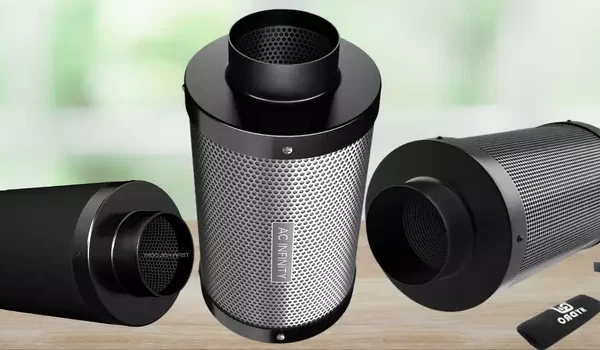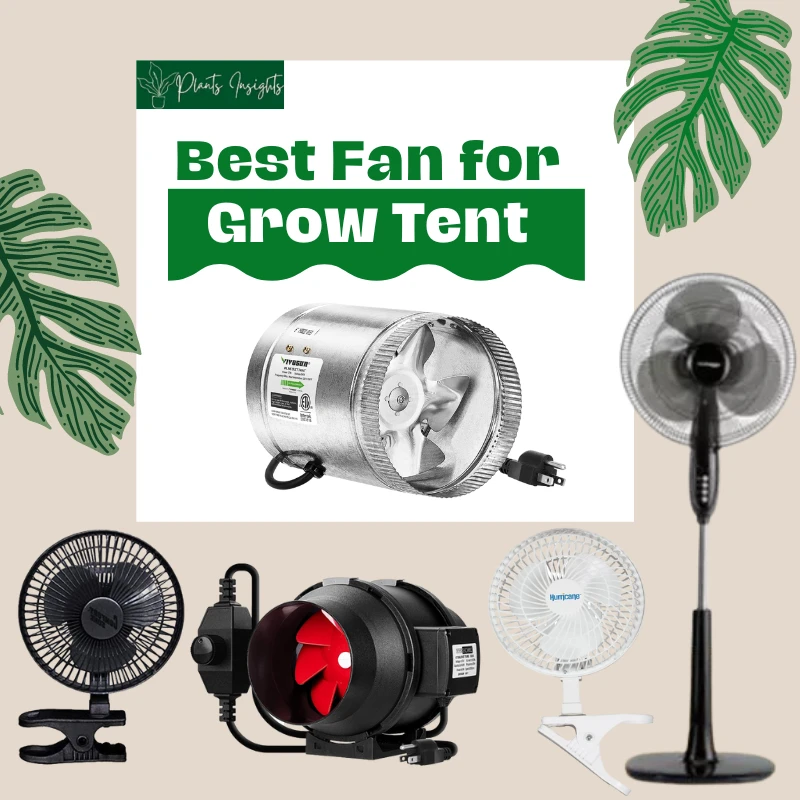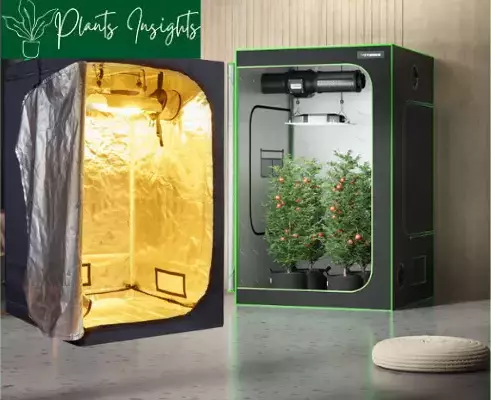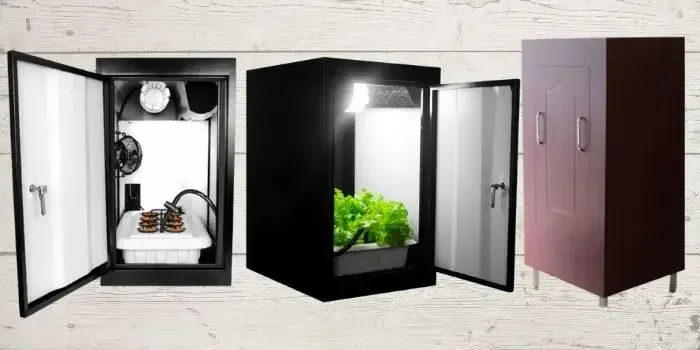Ctenanthe, also known as the “Never Never” plant, is a beautiful and multi-colored plant that can bring life and color to any interior. The Never Plant belongs to the Marantaceae group of flowering plants. These perennials are evergreen, and they are native to Brazil’s rainforests. Ctenanthe species are used widely as an ornamental plants because of their variegated leaf.
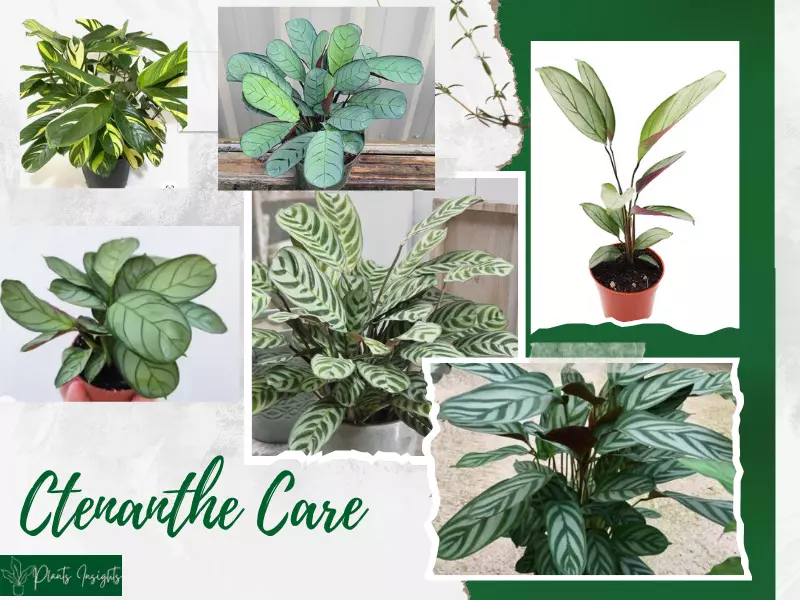
The Never Never Plant can grow horizontally up to 0.5m if grown under favorable conditions. The oval, glabrous leaves are lance-shaped (wide30cm, long10cm) and distinguished for their beautiful foliage designs and patterns. While it may seem daunting to keep a tropical plant from Brazil happy at home, it is easy if you understand the basics of how this plant needs to thrive.
Allied Species: Ctenanthe lubbersiana, Ctenanthe burle-marxii, Ctenanthe oppenheimiana, Ctenanthe Setosa, Ctenanthe Burle-Marxii,
Related Products:
Habitat & Ecology
| Botanical Name: | Ctenanthe |
| Family Name: | Marantaceae |
| Common names: | Never Never Plant , Fishbone Prayer Plant |
| Plant type: | Tropical flowering perennial plant |
| Origin: | Brazil |
| Hardiness zone | 10 to 11 |
| Height: | 2 feet tall |
| Humidity: | 60% and above |
| Temperature: | 55° F – 85° F |
| Spread: | 3-4 feet |
How do you Care for a Ctenanthe Plant?
Indirect, bright lighting is the best way to grow your perennial Ctenanthe Plant, which thrives in moist soil which is not too wet. You should also maintain the right temperature and humidity levels, water the plant in a regular pattern, and fertilize every month with half the strength of fertilizer.
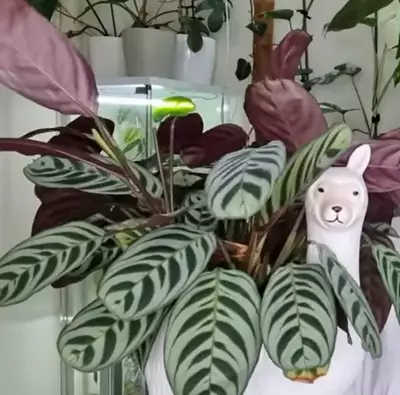
If properly maintained, Never Never plants can create a beautiful and unique design in your home. Many homeowners and gardeners lack the information to create the best environment for this plant to thrive. This article will provide all the information you need to ensure that the Ctenanthe Plant is healthy.

Lighting
For your Never Never Plant to thrive, you must provide an indoor space that receives indirect medium sunlight. Consider the forest environment where the plants once thrived when you think about where to plant your Never Never Never plant. The long days of diffused light are common, but the dense forest canopy provides shade that helps to reduce the intensity of the light.
Bright light can affect the color of the leaves, which can decrease the leaf’s beauty. The leaves’ colors can change dramatically if there isn’t enough indirect lighting. This will cause the plants to look duller.
Insufficient light can make the new leaves appear dark and dull and cause the silver bands to disappear or be wholly obliterated. However, excessive sunlight can cause the vibrant green color to fade.
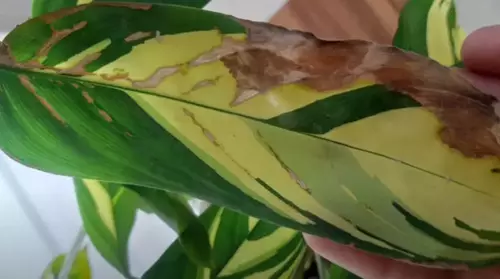
Please place your Ctenanthe plants near shaded windows. Please avoid placing your Ctenanthe plant near windows or other areas that receive high-intensity direct heat rays.
A north-facing or east-facing window is the ideal indoor location for the Never Never plant.
Moreover , Ctenanthe plants also mesmerized you by their time laps , meaning the leaves open during the day and closes at night. They are also refer to as prayer plants along with Calatheas and Marantas.

How Often Should I Water Ctenanthe?
Never Never Plants require a regular watering schedule to thrive indoors. The Ctenanthe plant is not very sensitive to drought, but you must ensure that the soil in your pot isn’t too dry. Never Never Plants love moist soil and should not be overwatered. Overwatering can cause waterlogged soil in the pot and root rot.
The moisture meter reading will indicate how much water your Ctenanthe plant needs. Place the moisture meter in the soil to measure depths of up to two inches. Suppose the moisture meter shows dry soil; water the plant. Please ensure that any excess water drains out of the pot’s drainage holes, and do not forget to empty the drip tray beneath the pot as soon as possible so that roots do not sit in the water.
You can mix a bit of any of the soil additives listed above into the regular houseplant soil mix. Please make sure you use a planter with drainage holes in the bottom to drain your Ctenanthes and stay clear of using terracotta unless you are susceptible to overwatering. It is porous and permits water to evaporate through its walls. This means it is prone to drying out too fast.
Ctenanthe Plants can develop brown leaf tips if exposed to high levels of chlorine or fluoride in tap water. Preferably use rainwater, filtered, or distilled water.
Moreover the leaves start curling and wilting if your Ctenanthe plant is underwatered. Make sure to water your plant as top two inches soil dries .

Humidity and Temperature
Never Never Ctenanthe Plants require high humidity. They need to be around 70-80%. Even though they grow well in a humid atmosphere of 50%, however, below 50%, the leaves will begin to dry and crack. This situation is a clear indication that your plants require more humidity indoors.
You can mist the plants frequently or buy a humidifier to give the plant the humidity it needs. If your plant shows low humidity signs, it can be helped by placing it in a tray of water and pebbles.
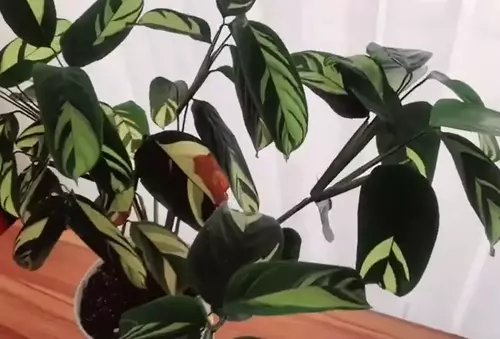
The temperate rainforest has high humidity and warm air, and its average temperature is high. Indoor temperatures between 55-85 degrees are best for its growth. Although native to Brazil’s tropical rainforest, the Never Never Plant can still thrive in cooler climates above 55°F (13°C). Ctenanthe is vulnerable to frosts. They can suffer severe harm when temperatures fall below 55°F/13°C. We recommend using a Hygrometer for humidity and temperature monitoring.

Fertilizer
Never Never Plant needs more nutrients during its growing season, so fertilize it once per month from spring through summer.
You shall not fertilize the Ctenanthe Never Never after repotting it. Fertilize them for at least six weeks to encourage root development.
We recommend using a general houseplant fertilizer containing iron for optimum growth boost. Please apply a water-soluble fertilizer, diluted to half strength every month from summer to spring, yielding the best results.

Soil Requirements
Ctenanthe enjoys some water in its soil but is also susceptible to root rot because of waterlogging. That means the best soil mix for your Never Never plant should contain an element that retains water (like coco coir , peat, or Sphagnum the moss) and a component that encourages drainage (like Perlite, orchid bark as well as pumice).

Repotting
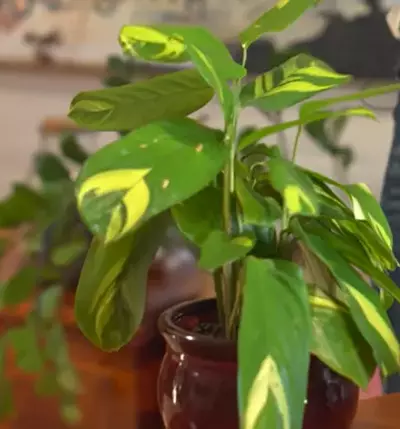
If you wish for your Never Never Plant to reach its maximum capabilities (offshoots as well), you’ll likely need to repot every two to three years. In case you notice, the soil is drying quickly and roots are emerging from the bottom of the pot through the drain hole, it is time to repot your Never Never plant.
Moreover, if you decide not to Repot, remember to provide your Ctenanthe with new soil every year.
We recommend repotting the plant using the common house plant compost mixed with peat, Perlite, and orchid bark. You shall choose one size bigger pot as a new home for your Ctenanthe plant. The plant should be hydrated 24 hours before making any changes to the roots to reduce the chance of shock during the transplant.

How do you Propagate Ctenanthe?
Due to its growth patterns, Ctenanthe (just like its counterpart, Calathea) isn’t a great candidate for simple stem propagation. It doesn’t even have stems since the leaves grow directly out of the root.
As mentioned earlier, you can multiply your plant if you want to do this. The division is the best way to move. Though this is usually a process of removing the plant from the pot, and best time to carry it out is along with the repotting activity. The process is simple as below:

Maintenance (Cleaning and Pruning)
The species doesn’t typically need pruning, except for eliminating unattractive and dead leaves. This is part of the routine maintenance for houseplants; a healthy Ctenanthe eventually gets rid of its old leaves to make room for fresh ones. So long as the leaves aren’t going through a rapid decline, this is nothing to be concerned about.

Pests and Diseases
Never Never Plant is generally unaffected by the majority of bugs and diseases. It could be affected by mealybugs, spider mites, or thrips in specific regions.
The mealybug infestations may leave an unctuous white remnant. Infestations of spider mites can make the leaves appear like it’s yellow and flecky. This affects the appearance of your leaves.
It is possible that the Never Never plant’s leaves may appear curled or drooping due to excessive sunlight, excessive heat, or low humidity. It could also be due to insufficient watering.
Gray Mold, often called Botrytis, may also cause issues when it comes to the Never Never plant if it is overly moist. It can be prevented by maintaining the humidity and not allowing the soil to become saturated with water.
If your entire plant turns yellow or you see the tips turning brown, your irrigation system must likely be changed or raised. A good plant care routine is usually needed to restore your plant’s vibrant silver and green tones.

Is Ctenanthe toxic to pets?
Never Never plant is not considered toxic and safe for pets and humans. However, in some cases, allergic reactions can happen, but usually, they are of minor nature.
FAQs
Are Ctenanthe easy to care for?
Ctenanthe plants are pretty fuzzy and not easy to take care of. The plant leaves are susceptible to damage due to lack of humidity, and taking care of these plants can be a daunting task for a new gardener.
Is Ctenanthe a Prayer plant?
Ctenanthe is a low-spreading plant and grows up to a height of two feet. Compared to height, the plant grows more sideways and can be as wide as six feet.
Ctenanthe plants belong to the Marantaceae family (Calatheas ,Marantas) and they open and close their leaves with the day and night changes. They are a close relative of actual Prayer plants, which are Marantas. Therefore, due to the foliage movement and family members of Marantas, some people also refer to them as Prayer plants.
How tall does Ctenanthe grow?
Ctenanthe is a low-spreading plant and grows up to a height of two feet. As compared to height, the plant grows more sideways and can be as wide as six feet.
Why do Ctenanthe leaves curl?
The Ctenanthe leaves curl due to the natural phenomenon of resisting dehydration. The plant leaves curl up when it is exposed to high temperatures and is low in moisture. Please shift the plant to a more comfortable environment and water it deeply to solve the issue.
Related Posts
Best Carbon Filter for Grow Room and Grow Tents
The major purpose of a carbon filter is to remove contaminants from the external environment, which is essential for odor control.
Best Dehumidifiers for Grow Tent in 2022
Dehumidifiers for grow rooms can make it easy to keep the humidity at optimal levels in your grow room throughout the year.
Best Fan for Grow Tent | Clip On, Inline & Oscillating
Grow tent fans are specially designed to increase air circulation and ventilation. If you want to regulate the environment of your indoor growing space effectively, you need best grow tent fans .
Best Grow Tent for Quality Grow
We have done close inspections and critical reviews of popular brands to provide you with the right inputs to select the best grow tent for quality grow.
Best Grow Box for Beginners – (Stealth Box & Grow Cabinet)
The best grow box for beginners shall be super easy to set up and operate, requiring minimum intervention and fulfilling your preferences of stealth and decor. We have tested and reviewed top-of-the-line models available in the market and will provide…

